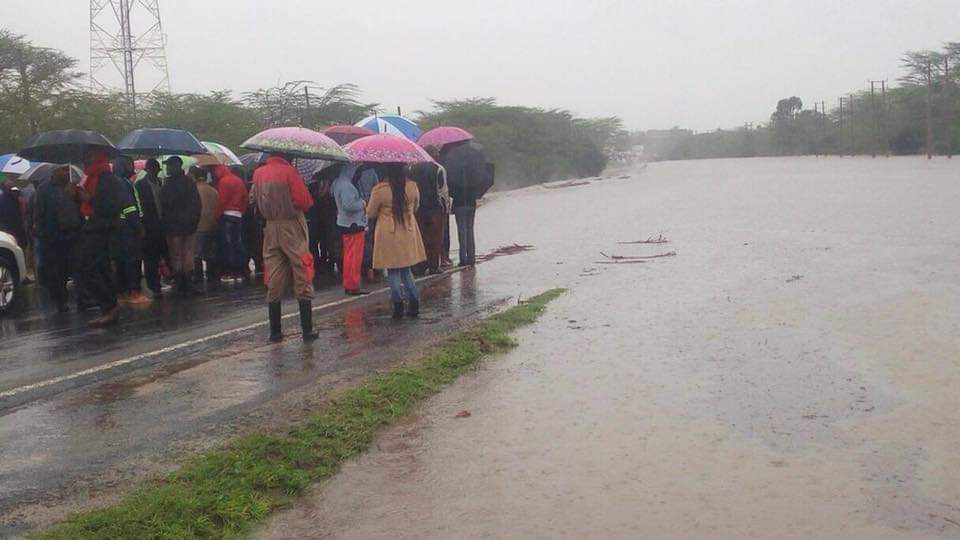The Kenya National Highways Authority (KeNHA) recently announced the temporary closure of certain road sections in Mombasa to facilitate essential infrastructure works. This closure aims to support the installation of culverts and the reinstatement of damaged road sections, which have been significantly affected by recent heavy rains and subsequent flooding.
KeNHA has urged the public to exercise caution when navigating these areas to ensure safety and smooth operations.This closure follows an earlier announcement by the Kenya Urban Roads Authority (KURA) regarding the temporary shutdown of major highways across the country.
The heavy rains that swept through Kenya caused extensive flooding, leading to severe damage to road networks and posing a significant challenge to transportation and safety. The infrastructural integrity of many highways was compromised, necessitating immediate intervention to prevent further deterioration and ensure the safety of road users.
Kenya, like many other countries in East Africa, experiences seasonal heavy rains, often resulting in significant impacts on infrastructure. The country’s road network is particularly vulnerable to such weather conditions due to a combination of factors, including inadequate drainage systems, aging infrastructure, and sometimes poor construction practices.
The recent heavy rains exacerbated these vulnerabilities, leading to widespread flooding that caused extensive damage to roads, bridges, and culverts. This situation not only disrupted transportation but also posed a significant risk to the safety of motorists and pedestrians.Culverts are critical components of road infrastructure, serving as conduits for water to pass beneath roads, railways, or embankments.
Properly functioning culverts help prevent water from accumulating on road surfaces, which can lead to erosion, structural damage, and hazardous driving conditions. The installation and maintenance of culverts are therefore essential for ensuring the longevity and safety of road networks.The reinstatement of affected road sections involves repairing and restoring damaged parts to their original condition.
This process can include resurfacing, filling potholes, reinforcing roadbeds, and improving drainage systems. Effective reinstatement ensures that the roads are safe for use and can withstand future weather events.The closure of road sections in Mombasa and other parts of the country is likely to have several immediate and longer-term impacts:
Disruption of Transportation: Road closures can significantly disrupt the flow of traffic, leading to delays and increased travel times. This is particularly challenging in urban areas like Mombasa, where road networks are critical for daily commuting, commercial activities, and tourism.
Economic Implications: The transport sector plays a vital role in Kenya’s economy, facilitating trade and movement of goods and services. Road closures can impact businesses, particularly those reliant on timely deliveries and logistics. The tourism industry, a significant contributor to Mombasa’s economy, may also be affected due to reduced accessibility.
Safety Concerns: While the closures are intended to enhance safety in the long term, there may be immediate safety concerns. Motorists unfamiliar with detours or alternative routes might face challenges, increasing the risk of accidents.Public Inconvenience: For residents and daily commuters, road closures can be a source of significant inconvenience.
Adjusting to new routes, potential traffic congestion on alternative roads, and the general unpredictability of travel times can cause frustration.KeNHA’s call for caution underscores the importance of public awareness and cooperation during such infrastructural interventions. Effective communication is crucial to ensure that the public is well-informed about the closures, alternative routes, and expected timelines for completion.
This can be achieved through various channels, including media announcements, social media updates, and road signage.Additionally, safety measures must be implemented to protect both the workers involved in the construction activities and the road users. This includes clear signage, barriers to demarcate work areas, and traffic management plans to guide motorists through detours.
The temporary closure of roads in Mombasa by KeNHA, aimed at installing culverts and reinstating affected sections, is a necessary step in addressing the damage caused by recent heavy rains. While these measures may pose short-term inconveniences and disruptions, they are essential for ensuring the long-term safety and reliability of Kenya’s road infrastructure. Public cooperation and adherence to safety guidelines are critical during this period to facilitate smooth and efficient completion of the works.

